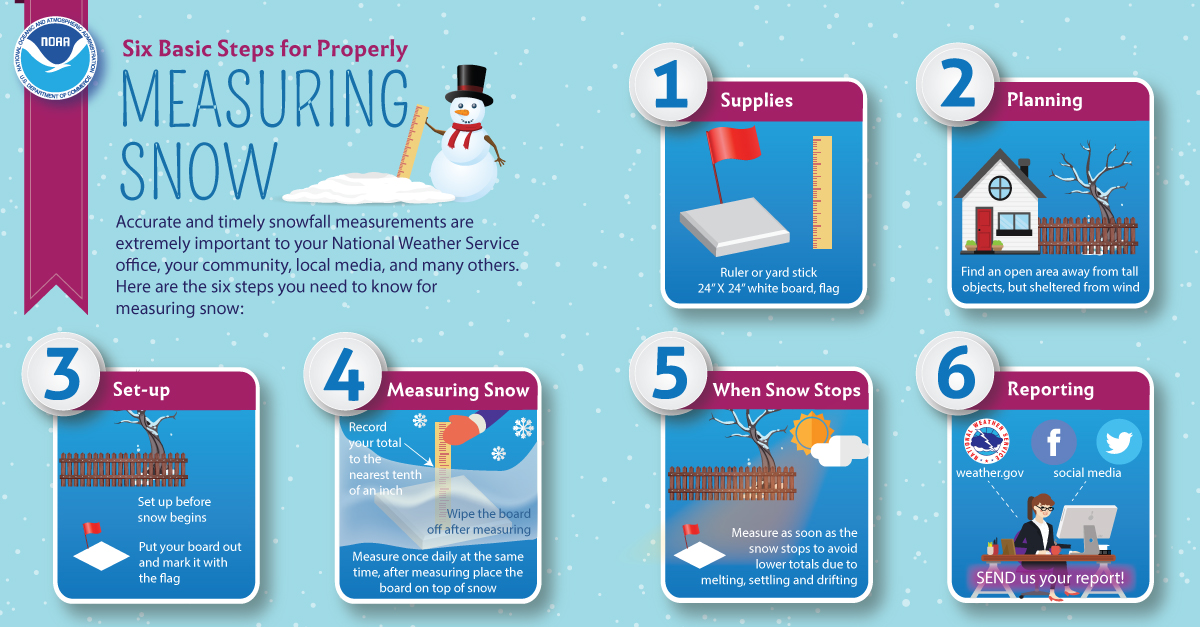Tornado
Tornado: A violently rotating column of air extending from a thunderstorm cloud to the ground. The Enhanced Fujita Tornado Intensity Scale is used to categorize tornadoes
Funnel Cloud: A condensation funnel extending from the base of a towering cumulus or cumulonimbus, associated with a rotating column of air that is not in contact with the ground (and hence different from a tornado). A condensation funnel is a tornado, not a funnel cloud, if either a) it is in contact with the ground or b) a debris cloud or dust whirl is visible beneath it.
Wind Damage
What kind of damage did the wind cause?
Hail
What size hail did you see?
See also: Hail Size Comparison Chart
Flooding:
What kind of flooding was observed?
Heavy Rain
Snow Info
Your snowfall reports are extremely helpful to us as we monitor the progression of winter storms. Intermediate reports during the storm help us know how well our forecast is performing and if there's updates needed. Your report after the snow has ended is used by us for verification purposes and to help document the storm. Here's what we need to know:
 |
Freezing Rain/Icing
Strong Winds
We are generally interested in wind speeds of 40-50 mph or higher. Here is some info on how to estimate wind speeds:
39-54 mph: Twigs break off trees; wind generally impedes progress.
55-72 mph: Damage to chimneys and TV antennas; pushes over shallow rooted trees.
73-112 mph: Peels surfaces off roofs; windows broken; light mobile homes pushed or overturned; moving cars pushed off road.
Dense Fog
We are mainly interested in visibility reports of a half mile or less.
Most reports we receive are transmitted as Local Storm Reports and can be viewed at the following locations. Many reports are also stored in the official NOAA Storm Events database.